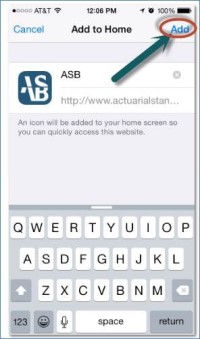By Cande Olsen
Member, Actuarial Standards Board
The Actuarial Standards Board (ASB) has opened dozens of actuarial standards of practice (ASOPs) for revision in addition to drafting several new ASOPs in the last few years. While reviewing drafts, the ASB has focused on improving the clarity of the language and improving consistency across ASOPs. In addition, the comment letters received on these drafts have revealed common questions and misperceptions, leading to further efforts to clarify language.
“Should Take into Account” vs. “Should Consider”
Most of the guidance in ASOPs is written using the phrase “an actuary should/may/must.” These terms are defined in ASOP No. 1, Introductory Standard of Practice. As discussed in ASOP No. 1, the phrase “should consider” is often used to suggest potential courses of action and is generally followed by a verb, for example, “The actuary should consider performing stochastic analysis.” In ordinary writing, “should consider” or “should take into account” may have the same meaning. But in ASOPs, consistent with the apparent intent of ASOP No. 1, “should consider” is normally used when the actuary is given some latitude in deciding how to think about the guidance.
As stated in ASOP No. 1, “If after consideration, in the actuary’s professional judgment, an action is not appropriate, the action is not required.” For example, “The actuary should consider performing stochastic analysis” requires the actuary to consider but not necessarily perform stochastic analysis. In contrast, “should take into account” suggests the actuary should always follow the guidance. For example, “The actuary should take into account the terms and conditions of the reinsurance program” requires the actuary to incorporate the terms and conditions of the reinsurance program into the analysis. The ASB is moving toward greater use of “take into account” to make its intent clearer.
Documentation vs. Disclosure
The ASB has noticed that actuaries sometimes use the terms “documentation” and “disclosure” interchangeably. But although the terms are related, ASOPs do not use them in the same way. “Documentation” refers to items the actuary records and keeps in their work papers. If there are questions later about how the work was performed, or another actuary takes over the assignment, the documentation can be consulted to show what the actuary did. Section 3 of each ASOP contains a subsection on documentation that allows actuaries to use professional judgment when preparing documentation and notes that documentation may vary with the complexity and purpose of the actuarial services being rendered.
In contrast, “disclosures”—what must be communicated to the actuary’s principal or other stakeholders—appear in the actuarial report itself. Section 4 of each ASOP lists items pertinent to the subject of the ASOP that must be disclosed in the actuarial report. Examples of items commonly included in a list of disclosures are methods, models, assumptions, and reliance.
Documentation—Required or Optional?
The ASB recognizes that different circumstances and work products require different levels of documentation. In most standards, the actuary “should consider preparing documentation.” But in some standards, particularly those that address regulatory requirements, documentation is required. Even in standards where documentation “should be considered,” other subsections of section 3 may require the actuary to document items specific to the subject matter of the ASOP.
More Guidance on Reliance
ASOPs issued in the last few years have included more reliance language than previous ASOPs. While ASOP No. 41, Actuarial Communications, addresses reliance in some instances, the ASB believes more guidance for specific circumstances in individual ASOPs is helpful. Recent ASOPs may include sections on reliance on data or other information supplied by others, reliance on assumptions or methods selected by another party, reliance on another actuary, or reliance on experts.
Your Feedback Is Important
Comments received from actuaries on ASOP exposure drafts have spurred ASB thinking and played a role in some of these clarifications and changes. We encourage you to submit comments whenever a draft in your area of practice is exposed for comment.




